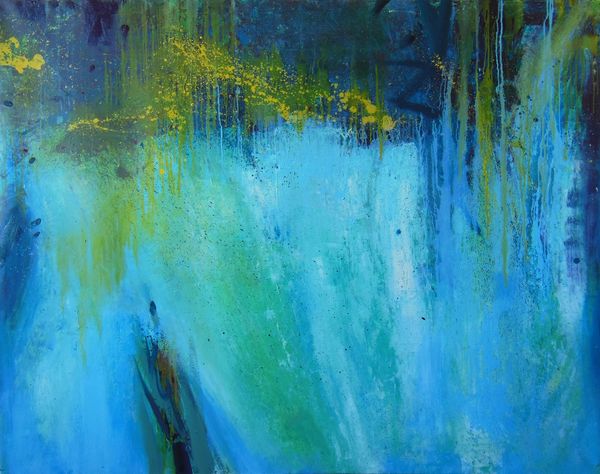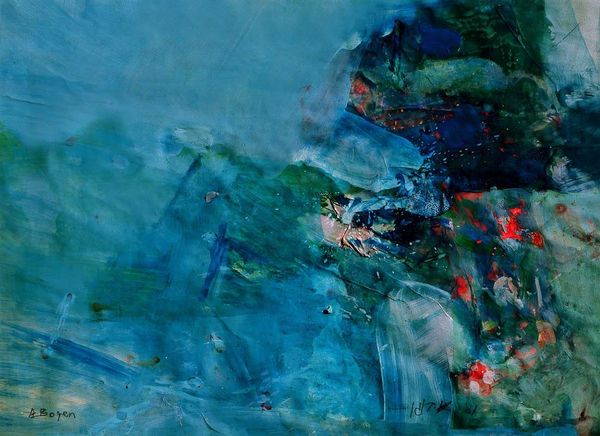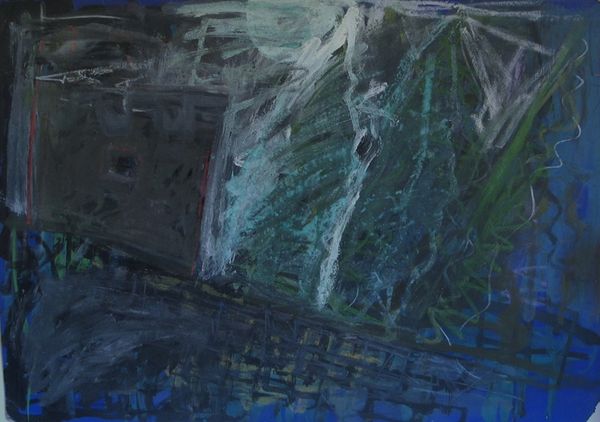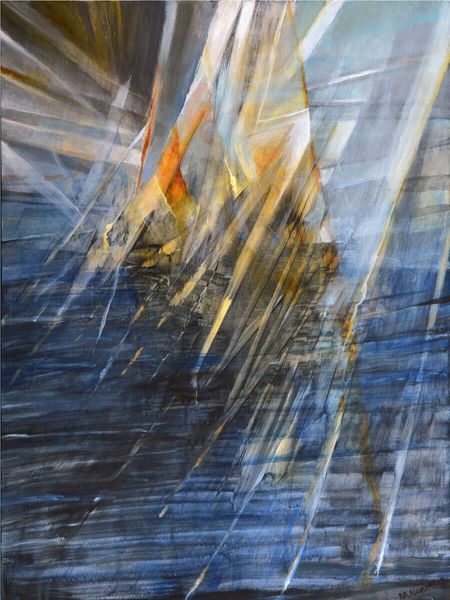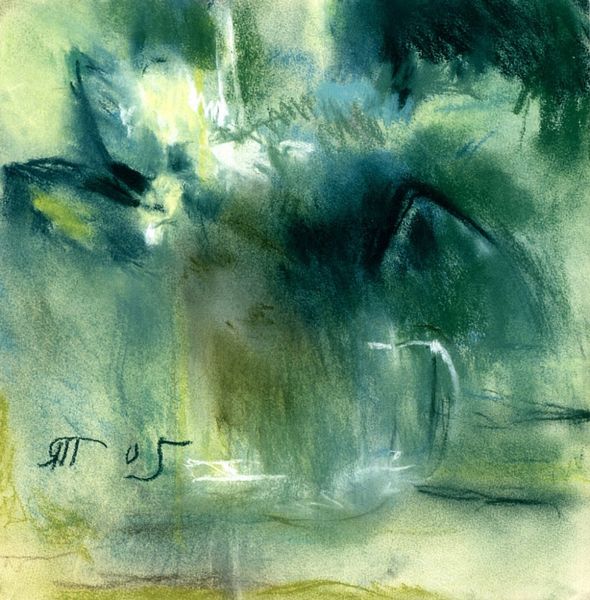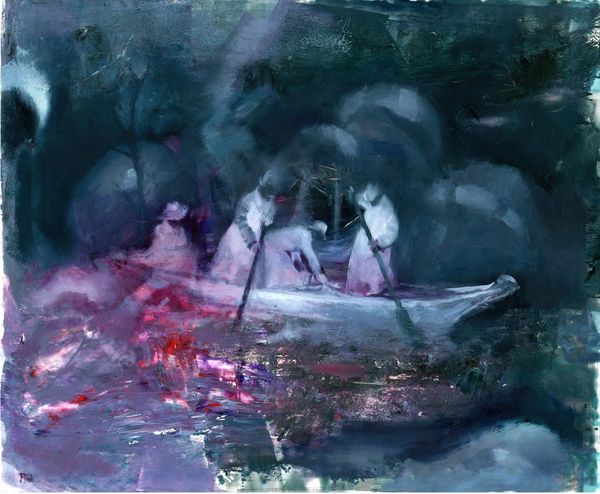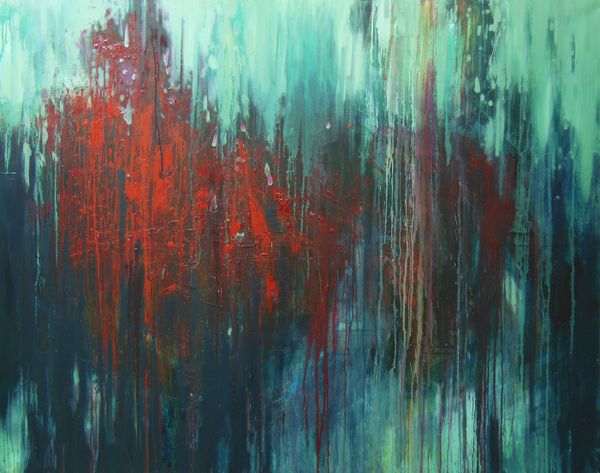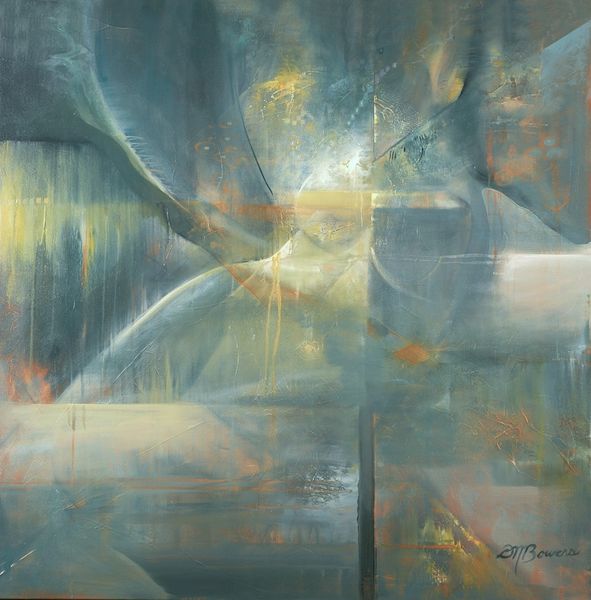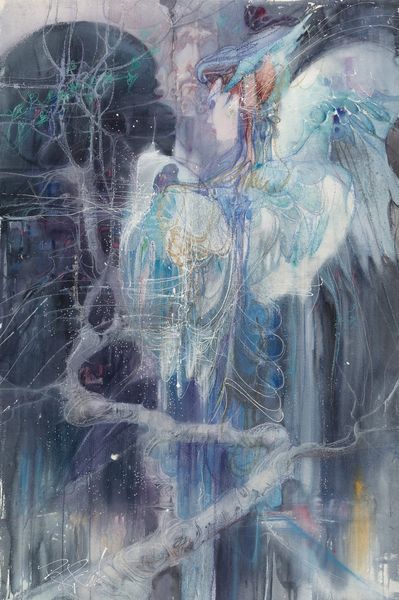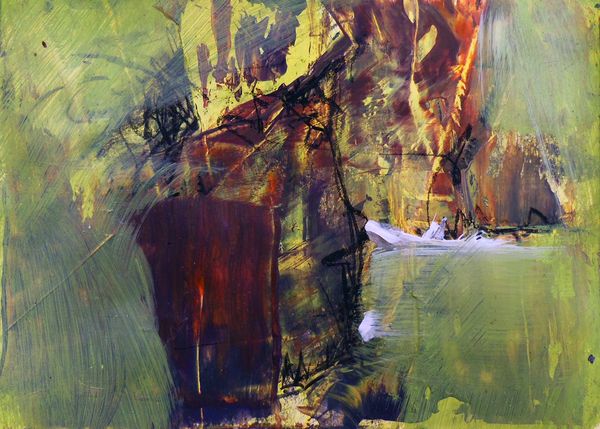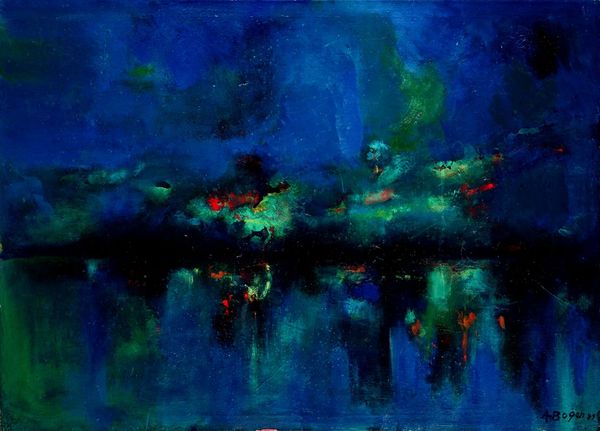
acrylic-paint
#
abstract expressionism
#
landscape
#
acrylic-paint
#
acrylic on canvas
#
cityscape
#
modernism
#
realism
Copyright: Modern Artists: Artvee
Curator: Here we have John Berkey’s "Tsunami," created in 1984. The artist utilized acrylic paint on canvas. It's quite striking. Curator: Absolutely. My initial impression is one of overwhelming dread and anxiety. It looks like a city being consumed, or about to be. The impending disaster looming above is powerful and evocative. Curator: I agree. When we examine Berkey's process with acrylics, we see thin layering and blending to create both transparency in the water and an almost surreal depiction of an urban space in crisis. Look at the sheer amount of visible brushwork. It's far from photorealist. Curator: True, this treatment connects with the symbolic nature of the scene. I can’t help but see it as a warning. In the context of the '80s, we’re looking at escalating Cold War anxieties, as well as an increased awareness of humanity's impact on the environment, especially given what a natural phenomenon such as a tsunami can do. Curator: Perhaps, but consider the craftsmanship involved in portraying light and reflection. The textures vary to give depth to the wave above and a ghostlike rendering of architecture submerged below. Even if metaphorical, that takes skill and planning. Did the process directly reflect this intention? Or was there more experimentation at play? Curator: Well, let’s not forget that cityscapes often symbolize power, wealth, and civilization. This image depicts that societal hub meeting its demise at the hand of something far greater than itself, prompting necessary dialogue about the potential repercussions when social structures disrupt nature’s natural order. It echoes longstanding societal debates regarding sustainability versus industrial advancement, highlighting vulnerability and questioning the value placed on capitalistic gains versus basic survival. Curator: I find it interesting that the labor invested creates an apocalyptic scene; all that material skill going towards a symbol of potential societal collapse through climate change or global conflict—however intentional that was or wasn’t. Curator: The artwork makes us think critically about both how these forces have affected us in the past, and how these circumstances influence and change how communities navigate risk, resilience, and collective well-being during difficult periods that reshape landscapes forever after devastating impact…it prompts us now to learn from them before facing inevitable repercussions brought by unsustainable acts within an interwoven framework requiring equity alongside ethical governance. Curator: The tension Berkey achieves through material choices reflects very clearly back to social and material structures and allows them a visual platform from where his skills help tell stories on different stages and perspectives—something anyone would respect at its essence… Curator: I appreciate your material breakdown; these visual interpretations spark critical dialogue across socioeconomic lines when approaching urgent conversations reflecting ecological justice when these conversations facilitate action on societal inequalities exacerbated during global disruption by highlighting actionable initiatives addressing past environmental harm affecting displaced communities as well
